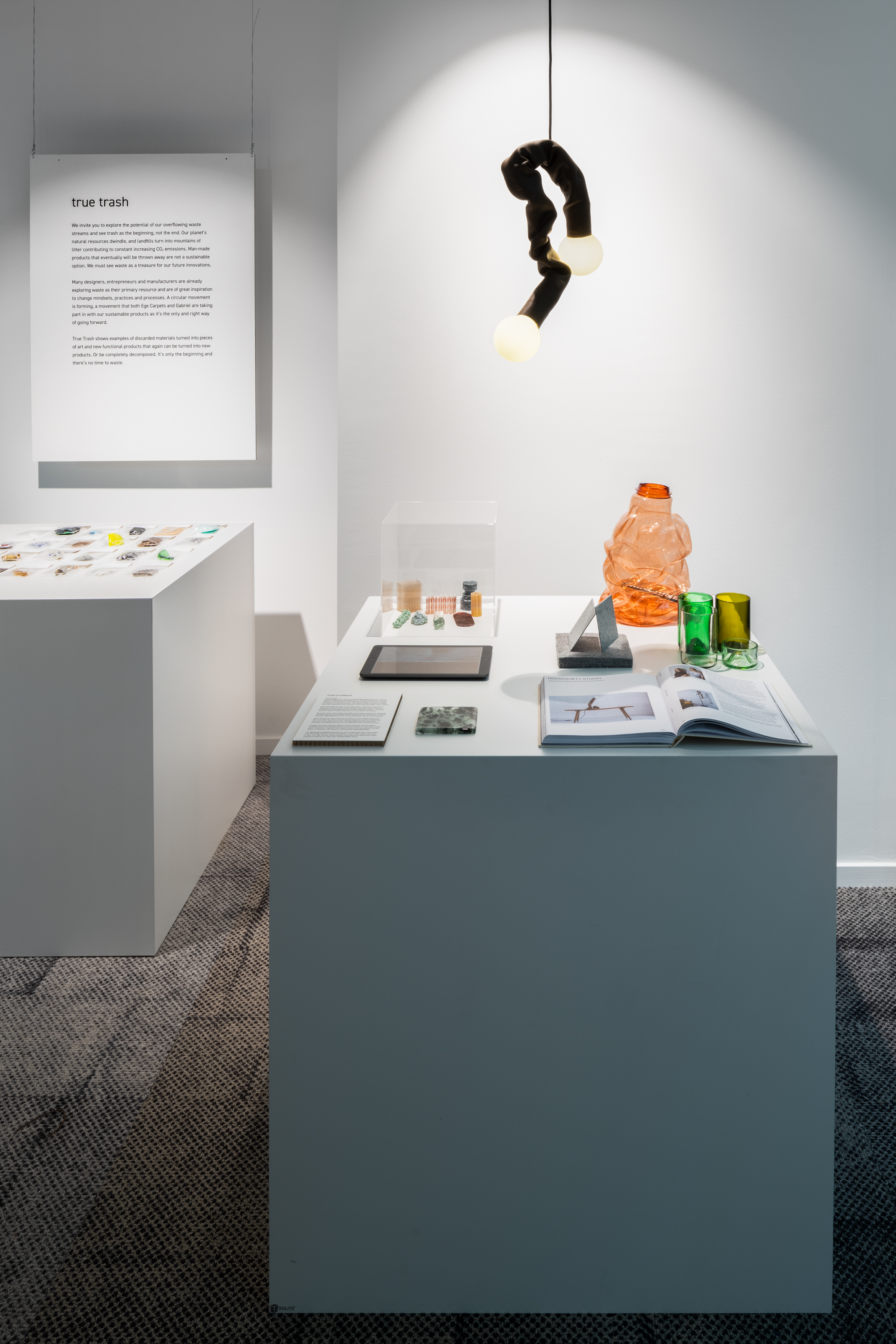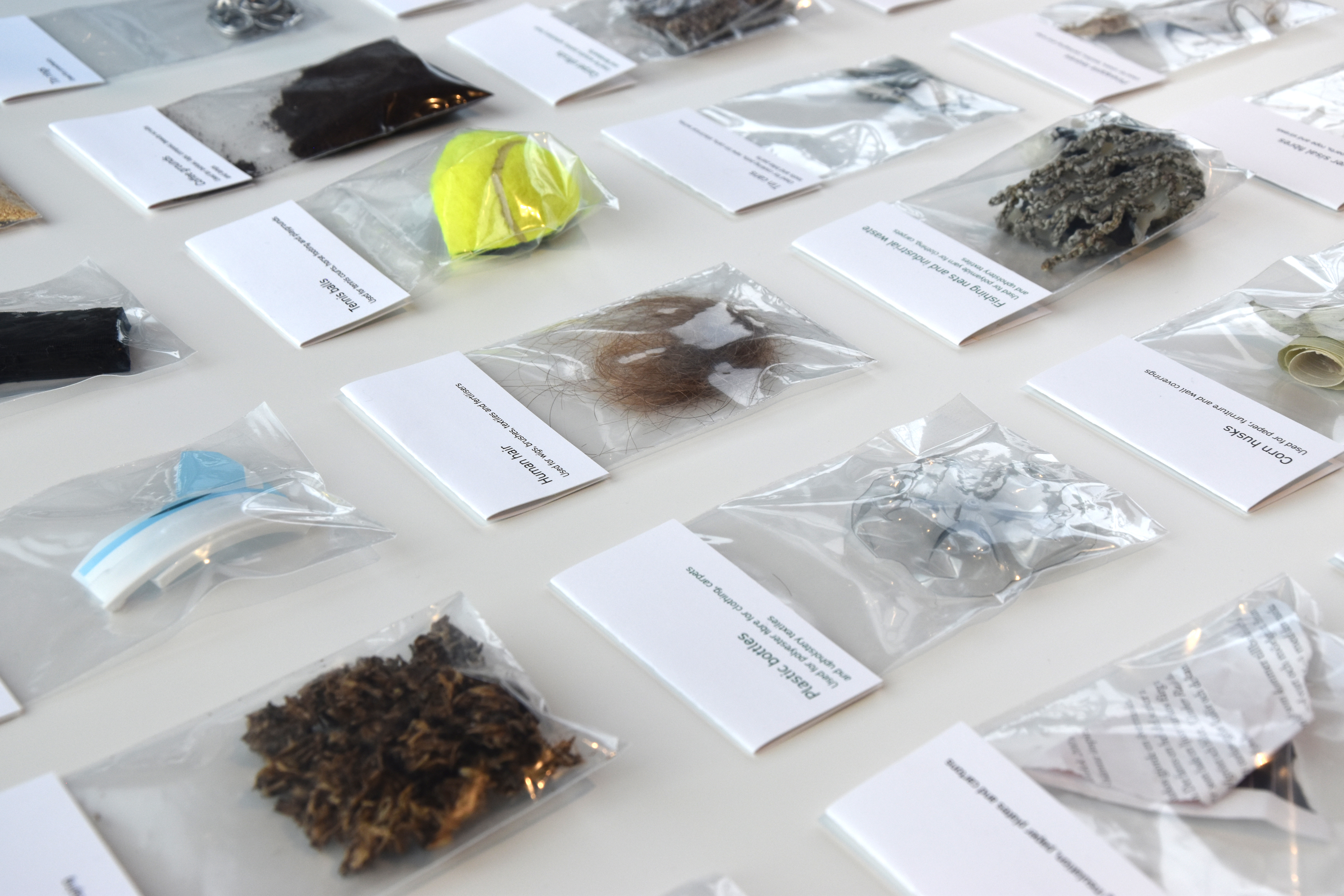TRUE TRASH: HOW TO TURN WASTE INTO VALUE
True Trash exhibits in our shared Ege Carpets / Gabriel showrooms in Stockholm, Oslo and Copenhagen. The exhibition invites you to explore the potential of our overflowing waste streams and see trash as the beginning, not the end. True Trash shows examples of discarded materials turned into pieces of art and new functional products that once again can be turned into new products or be completely decomposed.


No time to waste
Our planet’s natural resources dwindle, and landfills turn into mountains of litter contributing to constantly increasing CO2 emissions. Man-made products that'll eventually be thrown away aren’t sustainable options. Instead, we must see waste as a treasure for our future innovations. Many designers, entrepreneurs and manufacturers are already exploring waste as their primary resource and have become great inspiration to change mindsets, practices and processes.
The exhibition is divided into three parts:
- What’s in your trash
- Why trash is treasure
- How to transform trash to textiles
What’s in your trash
Unbelievable amounts of waste are thrown away. However, everyday leftovers, production residues and the constant flow of plastic waste are already being reused and reinjected into the value chain of new products. These circular innovations challenge us all in our private households and in our professional lives to rethink trash as something we must consider, keep and not least sort and turn into a valuable resource. Waste isn’t waste until it’s wasted.
Below is a sneak peek of 24 examples of trash that is already being turned into new materials or products. Visit one of our showrooms to explore them all.


Why trash is treasure
Enjoy a short introduction to six works of art or products created from waste materials. Feel inspired and rethink what to do with your own trash or reflect on how to specify trash-based pieces to your interior design project.









